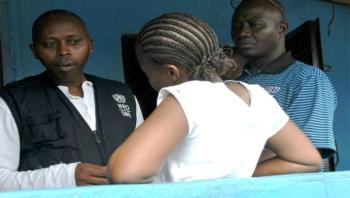
News









Antibiotic resistance is depleting our arsenal against deadly diseases and infections, such as tuberculosis and Staph infections, but recent research shows promise to speed up the drug discovery process. In a study reported in ACS Chemical Biology, University of Illinois researchers developed a new technique to quickly uncover novel, medically relevant products produced by bacteria.



It was humid, muddy and raining when World Health Organization (WHO) staff approached a compound in heavily populated New Kru Town, outside Monrovia, Liberia to look for people who have had contact with people infected with Ebola. A WHO technical adviser from Rwanda, sent in to help the zone coordinator, spoke to a woman who had cared for an Ebola patient. She understood the need to be monitored for the disease, but another man with whom the team talked denied knowing anyone with Ebola and refused further contact with the team.

With the U.S. healthcare reform mandate for increasing transparency and improved quality, the need for infection prevention and control in long-term care facilities (LTCFs) is becoming more critical than ever before for the more than 3 million Americans receiving geriatric care in U.S. annually. In January, the Association for Professionals in Infection Control and Epidemiology (APIC) published the Infection Preventionist’s Guide to Long-Term Care to assist facilities in creating and implementing comprehensive infection prevention programs.








Many studies have shown that more severe illness and even death are likely to result if you develop a secondary respiratory infection after developing influenza. Now, however, a team of researchers based at The Wistar Institute has determined that if you reverse the order of infection, the bacteria Streptococcus pneumoniae (often called pneumococcus) may actually protect against a bad case of the flu.

Researchers from the University of Southern California and the Oak Crest Institute of Science have discovered the link between antibiotics and bacterial biofilm formation leading to chronic lung, sinus and ear infections. The study results, published in the current issue of PLOS ONE, illustrate how bacterial biofilms can actually thrive, rather than decrease, when given low doses of antibiotics.






